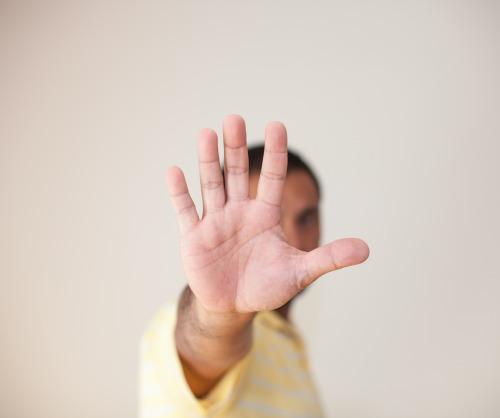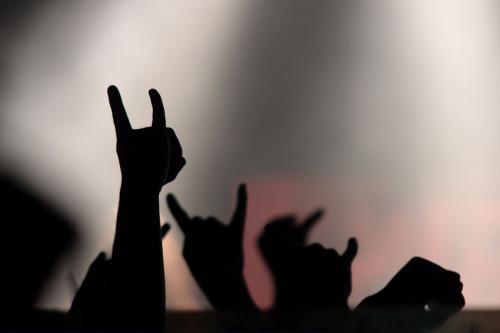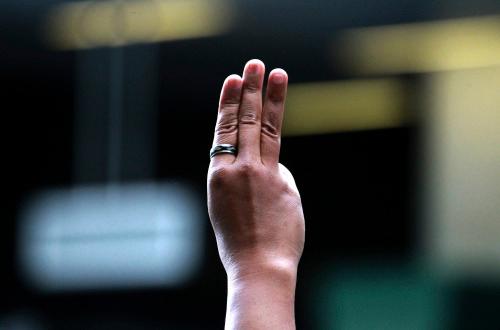18 Gestures That Can Cause Offense Around the World
One of the main problems travelers face is communicating with the locals. Even if you never leave home without your trusty phrase book, communication is as much about nonverbal cues as it is about talking.
In fact, people rely more heavily on hand gestures and body language when in situations where they are unable to verbally interact with someone.
But did you know that not all hand gestures mean the same thing in every country? In some places, gestures that we use on a daily basis in the U.S. to portray positive emotion or agreement, for example, might mean something highly offensive in a foreign land.
Take the OK sign — the simple hand signal where you put your thumb and first finger together to create a circular shape. In the U.S. we use it to convey agreement and compliance. Yet it is seen as offensive in Greece, Spain, and Brazil. In those countries it means that you are calling someone an a**hole. In Turkey, that sign is also an insult toward gay people.
So aside from keeping your hands firmly in your pockets while you are traveling, what can you do to ensure that you don’t insult the locals or end up in a bar brawl? The last time I checked, there was no section in any of my phrasebooks for hand gestures.
1. The chin flick. Brushing the back of your hand underneath your chin in a flicking motion means “get lost” in Belgium, northern Italy, and Tunisia. In France, this gesture is known as la barbe (”the beard”) and is the hand-sign equivalent of macho grandstanding.

You should probably just never do this. (Photo: Kyrylo Glivin/Alamy)
2. The fig. A clenched fist with your thumb between your first and second fingers means “screw you” (to put it mildly) in Turkey, Russia, and Indonesia. And in some countries it symbolizes lady parts. You know what I mean.
3. Forearm jerk. This is the action of punching your fist into your elbow joint while raising the other fist up in front of you. It will not get you a positive reaction in most parts of southern Europe or Brazil, and it’s used commonly by soccer fans wanting to send an offensive message to the fans of the opposing team.

Talk to the hand. (Photo: Tuan Tran/Moment/Getty Images)
4. The moutza. In Greece, Mexico, the Middle East, and Africa, the action of raising your open hand, palm out, with spread fingers in front of someone is a serious sign of displeasure. Possibly one of the oldest hand gestures still in use, it dates all the way back to ancient Byzantium, when criminals were chained to donkeys and paraded through the streets, where locals would rub their own feces onto the prisoner.
5. The cutis. Flicking your thumb from the back of your upper front teeth toward someone is seriously nasty in India and Pakistan and simply means “f*** you.” Very nice. This sign will likely get you ejected from any place of business and not welcomed back.
6. Five fathers. Arab and Caribbean countries see the action of pointing your right index finger and the grouped finger tips of your left hand as a way of saying, “you have five fathers.” Or, in harsher terms, “your mother is promiscuous.” So if you want to get deported in the Middle East, this is your go-to.
There are also several gestures that we use on a daily basis in the U.S., almost as a reflex, that mean something completely different elsewhere.

You may want to rethink how you convey the word “no.” (Photo: Elijas van Roon/Corbis)
7. Head shake. Most people assume that nodding your head is the universal sign for “yes” and shaking your head is the sign for “no.” But in Greece and Bulgaria, these actions are reversed. This can lead to some serious confusion if you are being hit on or trying to order food off a menu.
8. Crossing your fingers. In Vietnam, crossing your fingers, as we would in the U.S. to wish for luck, depicts a woman’s genitalia and is considered extremely insulting if aimed at another person. It is the hand-sign alternative of calling someone the c-word.

Just never do this. (Photo: Thomas Nanos/Alamy)
9. Horns. The placement of your fingers to show horns, usually known as the symbol for “rock on,” has a different meaning in Spain, Greece, and Italy — where it is called the “corna” and is considered a suggestive gesture made to a man to imply that his wife is cheating on him. It dates back more than 2,500 years and signifies a bull’s horns.

You may think you are being friendly. You are wrong. (Photo: Alejandro Moreno de Carlos/Stocksy)
10. Thumbs up. The thumbs-up sign does not mean “that’s great” in Australia as it does here. There, it means “up yours” or the painful-sounding “sit on it.” Basically, you are telling a person that you hope he gets something inserted up his bottom.
11. Come on over. In the Philippines, using your hand to make a “come here” gesture is one of the most offensive things you can do. In fact, this gesture is deemed so bad that you can actually get arrested for using it. We promise you that the last place you want to end up on your vacation is inside a Philippine prison.

Don’t be a jerk. (Photo: Aleksandra Kovac/Stocksy)
12. Crossed arms. Crossing your arms in front of you is considered a huge sign of arrogance in Finland. Standing with this posture in a bar is likely to get you into a fight.
Some countries have their own unique gestures with specific meanings.
13. Fist shakes. In Austria, shaking two fists in front of you is a way of wishing someone good luck.

In France, this means you are itching for a fight. (Photo: Mahdees Mahjoob/Alamy)
14. Slapping your fist. In France, slapping the palm of your hand over your other fist is seen as an aggressive gesture that suggests you want to beat up the person it’s aimed at. It is similar to telling someone to step outside.
15. Hand shakes. In Russia, shaking hands, or doing pretty much anything else, over a threshold is considered extremely unlucky.

Do you have any idea why this could be considered offensive? (Photo: Wason Wanichakorn/AP Photo)
16. Three-fingered salute. In Thailand, the raised arm with three fingers extended (like the gesture used in The Hunger Games) was outlawed after it became a symbol of opposition to the country’s military coup in 2012. How very original.
Not all gestures are made with your hands:
17. Feet gestures. In India, one of the worst things you can do socially is to show a person the soles of your feet or use your feet to point to or touch things. Feet are seen as unclean and the lowest point of the body. Resist the urge to give yourself a pedicure in public, or you might be faced with some angry locals.


